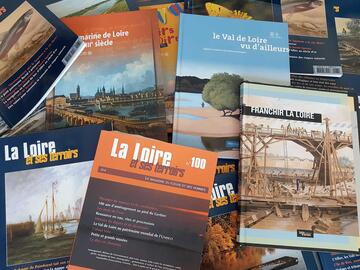
06/03/2025
[Fr] Décès de Philippe Auclerc
C'est avec tristesse que nous avons appris aujourd'hui le décès de Philippe Auclerc, co-fondateur de la maison d'édition "Loire et terroirs" et rédacteur...
Published on 13 January 2016 - Updated 25 January 2016
Cet article date d'il y a plus de 9 ans
The severe drop in the River Loire water levels over the summer of 2015 was another opportunity, following on from 2003 and 2011, for fresh archaeological work in the river bed and its banks. The group research project "Épaves et naufrages" (Wrecks) thus gathered reports and information from residents, archaeologists, researchers, boatpeople and walkers who had come across archaeological remains.
Several archaeological sites were subject to specially tailored assignments enabling at least information about this fragile heritage to be saved:
Intervention du 10 septembre 2015 - prélèvement dendrochronologique (Crédit photo : PCR Épaves & naufrages)
Attended by finders, river users and residents, these assignments were opportunities to pinpoint the location of the remains, characterise them (wrecks, water mill aprons, retaining walls or fishing grounds for example) and sometimes to determine their chronology through associated analyses (dendrochronology, ceramology, etc.).
Thanks to this information gathered within the Centre-Loire Valley Region’s Directorate for Cultural Affairs (DRAC) regional archaeological department, the remains could be added to the national archaeology map, and therefore protected, studied and enhanced in close liaison with their finders, associations and other institutions in charge of this heritage (including museums and local authorities).
The group research project "Wrecks in fresh water since the late Middle Ages. Archaeology of a nautical reality within the Loire landscape" is a programme authorised by the Centre – Loire Valley DRAC for three years (2015-2018). A multidisciplinary team of some twenty people are involved in this theme.
The project aims at:
The Loire heritage in all its diversity (such as lost cargo, wrecks, duits or chevrettes (similar to duits), old Loire ports) is unique, non renewable and particularly fragile, and still needs studying. Not declaring sites, scattering remains among private individuals, pillaging sites and concealing archaeological objects all prevent the community from being able to find out about such sites and are severely sanctioned by the law.
What you should do:
1. Photograph the remains and the context
2. Leave the remains where you found them
3. Note down their exact location
4. Report the site within 48 hours to the municipal hall, gendarmerie, State departments or regional archaeological department.
(Crédit photo : Ph.jugé / PCR Épaves & naufrages)